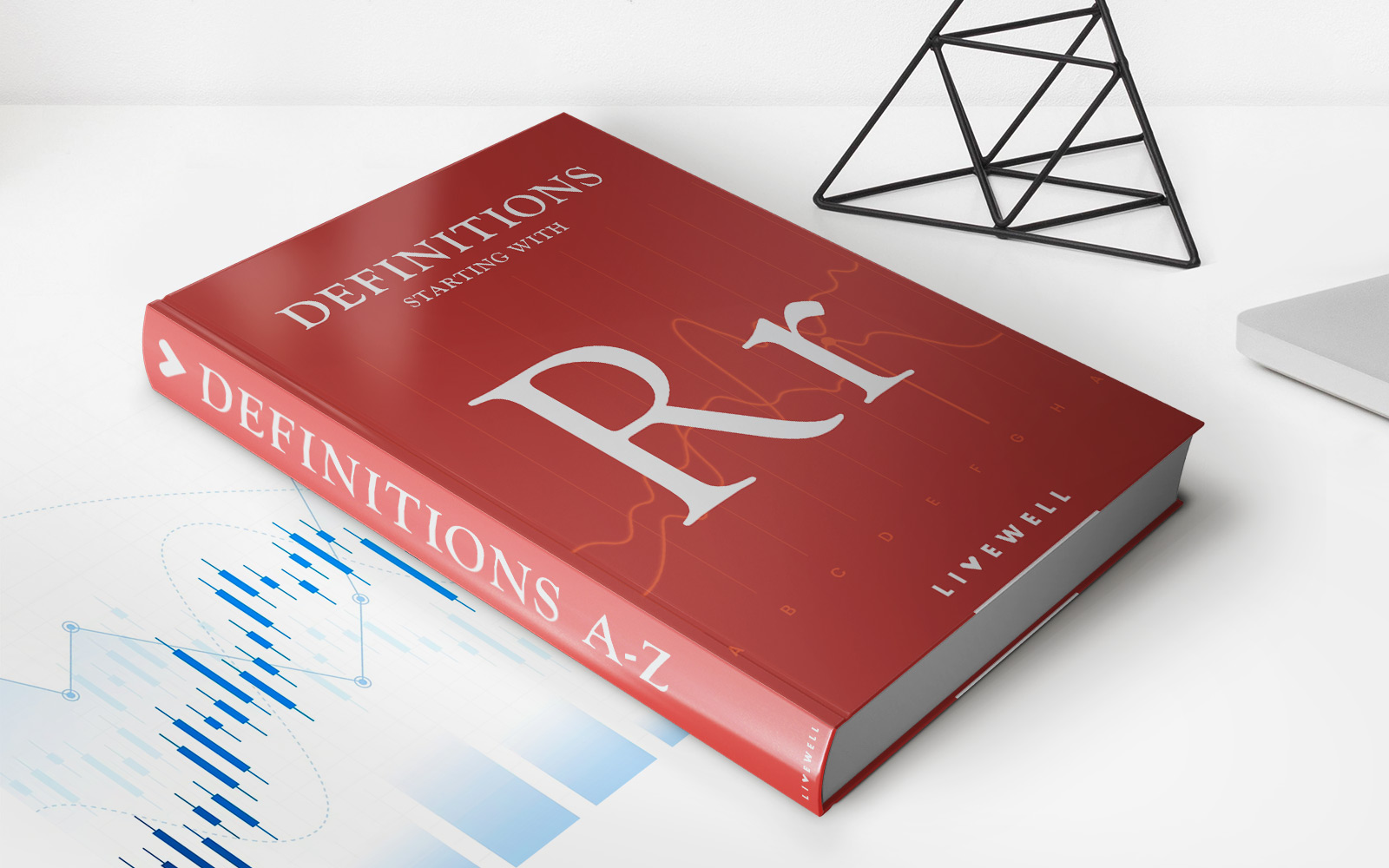

Finance
How Much Is Lawyer Malpractice Insurance?
Modified: February 21, 2024
Looking for lawyer malpractice insurance? Find out how much it costs and protect your finances with the right coverage for your practice.
(Many of the links in this article redirect to a specific reviewed product. Your purchase of these products through affiliate links helps to generate commission for LiveWell, at no extra cost. Learn more)
Table of Contents
Introduction
Welcome to the world of lawyer malpractice insurance, where attorneys protect themselves against the potential risks and liabilities that come with practicing law. As a legal professional, your expertise and guidance are invaluable to your clients, but that doesn’t exempt you from the possibility of making mistakes or facing legal claims yourself.
Lawyer malpractice insurance, also known as errors and omissions (E&O) insurance, is designed to safeguard attorneys and their firms from financial losses resulting from legal malpractice lawsuits. These policies provide coverage for legal fees, settlements, and judgments that may arise from claims of professional negligence, errors, omissions, or misconduct committed by legal professionals.
Just like any insurance, lawyer malpractice insurance comes at a cost. The premiums for these policies can vary widely depending on various factors, including the nature of your practice, your experience level, the size of your firm, and the location in which you practice. Understanding the factors that influence lawyer malpractice insurance costs can help you make informed decisions when choosing a policy that suits your needs and budget.
In this article, we will delve into the different types of lawyer malpractice insurance, explore the average cost of coverage, and discuss the factors that insurers consider when determining premiums. We’ll also provide you with tips on how to find the best rates for your lawyer malpractice insurance.
Whether you’re a solo practitioner or part of a large law firm, obtaining lawyer malpractice insurance is an essential step in protecting your practice and your professional reputation. By understanding the intricacies of lawyer malpractice insurance costs and coverage options, you can make confident decisions and ensure that you have sufficient protection in place.
Factors Affecting Lawyer Malpractice Insurance Costs
When it comes to determining the cost of your lawyer malpractice insurance, there are several key factors that insurers take into consideration. These factors influence the level of risk associated with insuring your legal practice and can impact the premiums you pay. Understanding these factors can help you make informed decisions and potentially reduce your insurance costs.
1. Practice Area: The area of law in which you specialize plays a significant role in determining your malpractice insurance costs. Some practice areas, such as personal injury or medical malpractice, have a higher risk of claims and, therefore, higher premiums. Areas of law that involve complex or high-stakes cases, such as corporate law or securities litigation, may also lead to higher insurance costs.
2. Claims History: Your past claims history is an essential factor for insurers when assessing your risk profile. If you have a history of malpractice claims, settlements, or judgments against you, the insurer may view you as a higher-risk client and charge higher premiums as a result.
3. Firm Size: The size of your law firm can impact your malpractice insurance costs. Generally, larger firms with more attorneys and a larger client base may face higher premiums due to the increased exposure to potential claims.
4. Geographic Location: The location in which you practice law can influence your insurance costs. Different states have varying legal landscapes, which can affect the frequency and severity of malpractice claims. Additionally, areas with a higher cost of living or higher rates of litigation may result in higher insurance premiums.
5. Experience Level: Your level of experience as an attorney also plays a role in determining your insurance costs. New attorneys or those with less experience may face higher premiums due to the perception of higher risk associated with less seasoned practitioners.
6. Coverage Limits and Deductibles: The coverage limits you select for your malpractice insurance policy, as well as the deductible amount you choose, can impact your premiums. Higher coverage limits and lower deductibles generally result in higher premiums, as they increase the potential financial burden on the insurer in the event of a claim.
7. Risk Management Practices: Insurers may also evaluate the risk management practices that you have implemented in your legal practice. These may include policies and procedures for client communication, document management, conflicts of interest, and continuing education. Demonstrating strong risk management practices can potentially lead to lower premiums.
Remember, each insurer has its own underwriting guidelines, and the weight given to these factors may vary. It’s essential to consult with multiple insurance providers to compare quotes and understand how each factor influences your premiums. By doing so, you can find the best coverage at a competitive price for your legal practice.
Types of Lawyer Malpractice Insurance
When it comes to lawyer malpractice insurance, there are different types of policies available to cater to the unique needs of legal professionals. Understanding these options can help you choose the right coverage for your practice. Here are the primary types of lawyer malpractice insurance:
- Claims-Made Policy: This is the most common type of lawyer malpractice insurance. A claims-made policy provides coverage for claims made and reported during the policy period. It covers incidents that occur while the policy is in effect, regardless of when the claim is reported. It is essential to maintain continuous coverage to ensure protection for past services rendered.
- Occurrence Policy: An occurrence policy provides coverage for incidents that occur during the policy period, regardless of when the claim is reported. Unlike claims-made policies, occurrence policies provide coverage for claims reported even after the policy has expired, as long as the incident happened during the policy period. However, occurrence policies can be more expensive than claims-made policies.
- Claims Expense-Only Policy: This type of policy covers only defense costs and expenses incurred for defending against malpractice claims. It does not provide coverage for any settlement or judgment amounts. Claims expense-only policies are typically purchased in addition to a primary malpractice insurance policy to provide an extra layer of protection for legal fees.
- Tail Coverage: Tail coverage, also known as extended reporting period (ERP) coverage, is an optional add-on to claims-made policies. It provides coverage for claims made after the policy period has ended, for incidents that occurred when the policy was in effect but were not reported during the policy period. Tail coverage is crucial when changing insurers or retiring from practice, as it ensures ongoing protection for past work.
It’s important to carefully review and understand the terms and conditions of each type of lawyer malpractice insurance policy. Consider your practice area, risk tolerance, and future plans when selecting the right coverage for your specific needs. Consult with an insurance professional who specializes in lawyer malpractice insurance to ensure that you have the appropriate coverage in place.
Average Cost of Lawyer Malpractice Insurance
The cost of lawyer malpractice insurance can vary significantly depending on various factors, such as the size of your firm, the nature of your practice, and your geographic location. It’s important to note that these are just general averages, and individual premiums may vary. Nevertheless, understanding the average cost can give you a ballpark figure when budgeting for your insurance expenses.
On average, solo attorneys can expect to pay between $1,200 and $5,000 per year for malpractice insurance coverage. This range can increase for attorneys practicing in high-risk areas such as personal injury or medical malpractice.
For small law firms with two to nine attorneys, the average cost of malpractice insurance ranges between $5,000 and $25,000 per year. The specific premium within this range depends on factors such as the practice area, claims history, and geographic location.
Larger law firms with more than ten attorneys may face higher malpractice insurance costs due to increased exposure to potential claims. The average annual premium for larger firms can range between $25,000 and $100,000 or more.
It’s important to keep in mind that these figures are average estimates and can vary significantly based on individual circumstances. Certain practice areas, such as intellectual property or securities litigation, may have higher premiums due to the complexity and potential financial exposure of these cases.
Additionally, factors such as claims history, coverage limits, deductibles, and risk management practices can also influence the cost of lawyer malpractice insurance. Maintaining a clean claims history, implementing strong risk management protocols, and considering coverage options that align with your firm’s needs can help reduce your insurance costs.
When shopping for lawyer malpractice insurance, it’s recommended to obtain quotes from multiple insurers to ensure you are getting the best coverage at a competitive price. An insurance professional who specializes in lawyer malpractice insurance can assist you in navigating through the options and negotiating favorable rates.
Determining Factors in Lawyer Malpractice Insurance Premiums
When it comes to determining the premiums of your lawyer malpractice insurance, insurance providers take several factors into account. These factors help insurers assess the level of risk associated with insuring your legal practice and determine the appropriate premiums. Here are some key factors that influence lawyer malpractice insurance premiums:
- Practice Area: The type of law you practice plays a significant role in determining your premiums. Practice areas with higher risk, such as personal injury or medical malpractice, often come with higher insurance costs. Those practicing in low-risk areas, such as real estate or estate planning, may enjoy lower premiums.
- Claims History: Insurers carefully review your claims history to assess your risk profile. Attorneys with a history of malpractice claims or settlements are considered higher-risk clients and may face higher premiums as a result.
- Experience Level: The level of experience you have as an attorney can impact your insurance premiums. Newer practitioners or those with less experience may face higher premiums due to the perception of a higher risk associated with their practice.
- Firm Size: The size of your law firm can affect your insurance premiums. Larger firms with more attorneys and clients may face higher premiums due to the increased exposure to potential claims. Smaller firms or solo practitioners may have lower premiums in comparison.
- Geographic Location: The location in which you practice law can influence your insurance premiums. Different states have varying legal landscapes and levels of litigation, which can impact the frequency and severity of malpractice claims. Areas with a higher cost of living or higher rates of litigation may result in higher insurance premiums.
- Coverage Limits and Deductibles: The coverage limits you select for your malpractice insurance policy and the deductible amount you choose can impact your premiums. Higher coverage limits and lower deductibles carry higher premiums as they increase the potential financial burden on the insurer in the event of a claim.
It’s important to note that each insurance provider may weigh these factors differently and have their own underwriting guidelines. Therefore, it’s recommended to obtain quotes from multiple insurers to understand how each factor influences your premiums.
To potentially reduce your lawyer malpractice insurance premiums, there are steps you can take. Implementing robust risk management practices, maintaining a clean claims history, participating in continuing education programs, and adopting effective client communication and documentation practices can demonstrate to insurers that you are a lower-risk client and may result in more favorable premium rates.
Consulting with an insurance professional who specializes in lawyer malpractice insurance can provide valuable insights and guidance in navigating through the premium determination process, ensuring that you secure appropriate coverage at a competitive price.
How to Find the Best Lawyer Malpractice Insurance Rates
Finding the best rates for lawyer malpractice insurance requires careful consideration and comparison of different insurance providers. Here are some key steps to help you secure the best coverage at the most competitive rates:
- Assess Your Needs: Begin by assessing the specific needs of your legal practice. Consider factors such as your practice area, claims history, and desired coverage limits. Having a clear understanding of your needs will help you communicate effectively with insurers and obtain accurate quotes.
- Shop Around: Obtain quotes from multiple insurance providers that specialize in lawyer malpractice insurance. This will allow you to compare coverage options, premiums, and policy terms. Consider both national and regional insurers to ensure you have a wide range of options to choose from.
- Consult an Insurance Professional: Work with an insurance professional who specializes in lawyer malpractice insurance. They can provide valuable insights, navigate the complexities of the insurance market, and negotiate with insurers on your behalf. Their expertise can help you find the best rates and coverage tailored to your specific needs.
- Look for Discounts: Inquire about any potential discounts or cost-saving opportunities available to lawyers. Some insurers offer discounts for maintaining a claims-free history, participating in risk management programs, or bundling multiple insurance policies.
- Review Policy Exclusions: Carefully review the policy exclusions to ensure that the coverage provided meets your practice’s specific requirements. Pay close attention to any limitations or exclusions related to certain practice areas or types of claims. Make sure the policy aligns with your risk profile and potential areas of exposure.
- Consider Additional Coverages: Evaluate whether additional coverages, such as cyber liability insurance or employment practices liability insurance, are necessary for your legal practice. These coverages can provide added protection in an increasingly digital world and in relation to employment-related issues.
- Review Policy Terms and Conditions: Thoroughly review the terms and conditions of the policy before making a final decision. Pay attention to the coverage limits, deductibles, reporting requirements, and any other provisions that may affect the scope and cost of the insurance coverage.
- Assess Financial Stability: Consider the financial stability and reputation of the insurance providers you are considering. You want to ensure that the insurer has the necessary resources to fulfill its obligations in the event of a claim.
- Seek Recommendations: Reach out to colleagues or professional networks to gather recommendations and insights about insurance providers. Their firsthand experiences can provide valuable perspectives and help guide you towards reputable insurers.
Remember, the goal is to find a balance between the cost of the premium and the quality of coverage. It’s crucial to thoroughly review and understand the terms of the policy to ensure it meets your specific needs and provides adequate protection for your legal practice.
By following these steps and working with an insurance professional, you can increase your chances of finding the best rates for lawyer malpractice insurance that align with your practice’s needs and budget.
Conclusion
Obtaining lawyer malpractice insurance is a crucial step in protecting your legal practice from potential financial risks and liabilities. Understanding the factors that affect insurance costs, the different types of coverage available, and how to find the best rates is essential for making informed decisions.
Factors such as your practice area, claims history, experience level, firm size, geographic location, coverage limits, and deductibles all play a role in determining your insurance premiums. By assessing these factors and implementing risk management practices, you can potentially reduce your insurance costs and secure more favorable rates.
When seeking lawyer malpractice insurance, it’s important to shop around and obtain quotes from multiple insurers. Working with an insurance professional who specializes in lawyer malpractice insurance can provide expert guidance and help you navigate the complexities of the insurance market.
Take the time to review and compare policy terms, including exclusions, to ensure that the coverage aligns with your specific needs and potential areas of exposure. Consider additional coverages that may be necessary for your practice, such as cyber liability insurance or employment practices liability insurance.
Ultimately, securing the best rates for lawyer malpractice insurance requires a thorough understanding of your practice, effective communication with insurers, and careful evaluation of policy options. By following these steps and considering the recommendations provided, you can find the coverage you need at a competitive price.
Protecting your legal practice and your professional reputation is of utmost importance. By investing in comprehensive and affordable lawyer malpractice insurance, you can have peace of mind knowing that you have a safety net in place should any claims arise.














